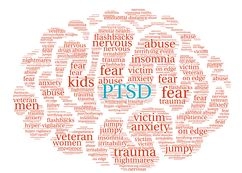
I founded Calma after working as a behavior interventionist for KIPP (Knowledge is Power Program), a nationwide network of schools in under-resourced communities. Unfortunately, I encountered many students who lacked self-regulation skills, the ability to calm themselves down when emotions began to escalate, and worse, many more students who had a hard time even calming their minds enough to simply be still, and engage in a lesson. Having worked in Psychiatry research with military soldiers suffering from PTSD in my previous job, I was very familiar with the term hypervigilance, the state of being highly or abnormally alert to potential danger or threat. I noticed the children I was working with were expressing similar symptoms: increased alertness, sensitivity to their surroundings, constant worry, stress and fear.

I dug into the latest research on childhood cognitive development from books like Helping Children Succeed, Thirty Million Words and Teaching with Poverty in Mind, and found that the prefrontal cortex, the part of the brain responsible for working memory, self-regulation and executive function doesn’t just develop in a positive way on its own, but is highly susceptible, and reactive, to the environment in which the child is exposed to. Therefore, if a child is raised in a warm, loving home with a positive language environment then the prefrontal cortex should develop just beautifully. In contrast, if a child is raised in a stressful environment with negative or volatile parent talk, the development of the prefrontal cortex (and, therefore, self-regulation and executive function) is stunted, compromising the child’s ability to deal with the basic stresses of life, their immune system, and their mental health. (Suskind, p. 112). The child simply will not have developed the ability to regulate him or herself emotionally or cognitively if this brain development is hindered in the first three years of life. Unfortunately, according to Paul Tough in Helping Children Succeed, currently 51% of our nation’s children are raised in such environments due to the chronic, toxic stress caused by poverty. When I read this, my mind exploded; the children I was working with didn’t lack the will to self-regulate and concentrate, they lacked the cognitive ability to do so.
In addition, a child who has poorly developed self-regulation and executive function will have a hard time learning because the part of the brain (the prefrontal cortex) that would have allowed them to focus on a single activity for an extended period, or the ability to understand and follow directions, or the ability to cope with disappointment and frustration, or the ability to interact capably with other students, was not developed in the first three years of life (Tough, p. 29). Instead, the child experiences a constant state of hypervigilance where the brain spends all of its time in the “fight or flight” mode, and when amygdala (the part of the brain responsible for the fight or flight mode) is activated, the prefrontal cortex (responsible for learning) cannot be activated because the amygdala takes over. As Suskind bluntly states in her book Thirty Million Words, “if a child’s mind can’t, in a sense, quiet itself or concentrate on the information being presented, that information will not be absorbed by the child. It’s that simple.”

Around that time, I began practicing mindfulness for my own mental health purposes while parenting a colicky baby. Mindfulness allowed me to notice my negative thoughts, and simply observe them, as opposed to getting carried away by them as they manifested physically. When I returned to the classroom, I began practicing mindfulness with all 650 K-4th grade students, and saw incredible results. It allowed children a space where they felt safe, and also gave them the time to practice letting go of any negative thoughts from something that happened previously, or that may happen in the future, and simply focus on being present in the very moment they were in. It completely changed the environment of my classroom to a safe and peaceful space where children’s thoughts, minds and bodies were calm, and, therefore, ready for learning. In addition, research shows that mindfulness not only fosters skills of behavioral regulation but also builds the very part of the brain responsible for learning, the prefrontal cortex.
At the time, I wasn’t able to find many resources that both addressed the social-emotional aspects of mindfulness while also helping students understand that calming the mind was essential for effective learning. We specifically wanted the program to help children who may have experienced chronic, toxic stress at home so that they would be able to develop the skills they needed to self-manage and build positive relationships, all while growing their prefrontal cortex. Therefore, we wrote the curricula combining the latest research on social-emotional learning, psychology, mindfulness and cognitive development. Check it out by clicking here.

Unfortunately, since 2016, when we started our work on the Calma curricula, our nation’s children have experienced literally more than 100 school shootings, according to the New York Times. And, that number rises weekly, if not daily. No longer can we only be concerned that 51% of our nation’s children are growing up experiencing chronic, toxic stress due to poverty, but that all of our children are experiencing chronic stress due to gun violence in schools. This is observed every day by millions of educators across the country, but was highlighted nationally when 13-year-old Benje Choucroun was called on as he sat among the White House press corps. He said his school recently had a lockdown drill, and that one thing that affected students’ mental health was “the worry about the fact that we or our friends could get shot at school.” This constant fear experienced in our schools is the same hypervigilence experienced by our nation’s veterans suffering from PTSD.

I am far from certain what, if any, policy or law can be put into place to prevent these shootings from happening. But I do know that if children don’t feel safe in schools, then they’re not learning in their classrooms no matter how fancy the curricula, how experienced the teacher, how bright the student, or how loving the parents. We must create environments in our classrooms and schools where students feel safe enough to put down their guard, and open their minds to be able to absorb information. Below are simple, yet meaningful tips to help your students, our nation’s children, feel welcome, comfortable, loved and safe in your classrooms. I heard in a training once it takes 10 positive interactions with a child to overcome one negative experience, so we’ve got our work cut out for us. May Calm & Loving Minds Achieve in your classrooms.
Hug.
Smile.
Speak softly.
Shake hands.
Make eye contact.
Practice Mindfulness.
Greet students at the door.
Call each student by name.
Ask how they’re doing & really listen.
Learn something personal about each student, and ask about it the next day.
Create time for community-building- talk to your administrators about setting this time aside every day.
Use positive framing. Instead of “don’t” do this or that, tell them what you do want to see. i.e. Instead of, “Don’t run in the hallway” say, “Please walk in the hallway”. Instead of, “Don’t just yell out” try “Please raise your hand to get my attention.”